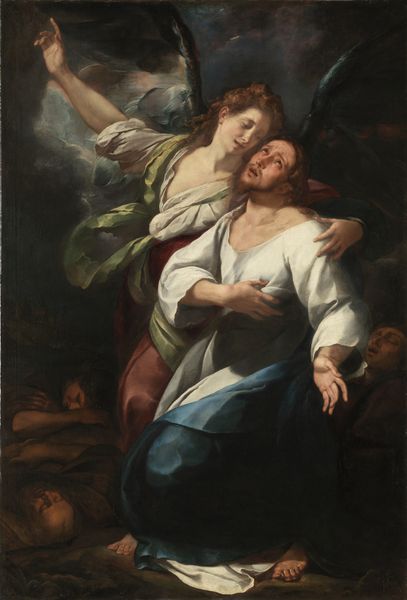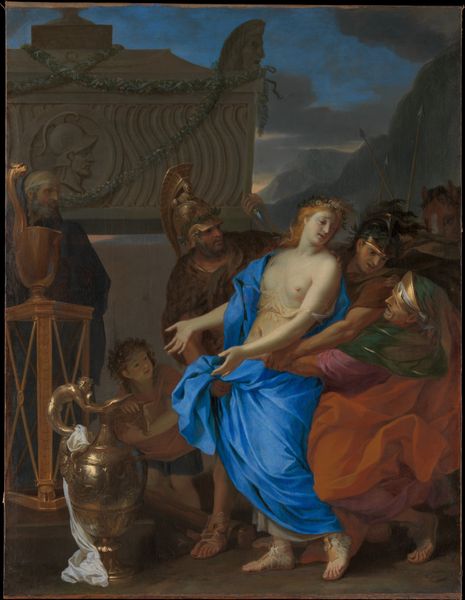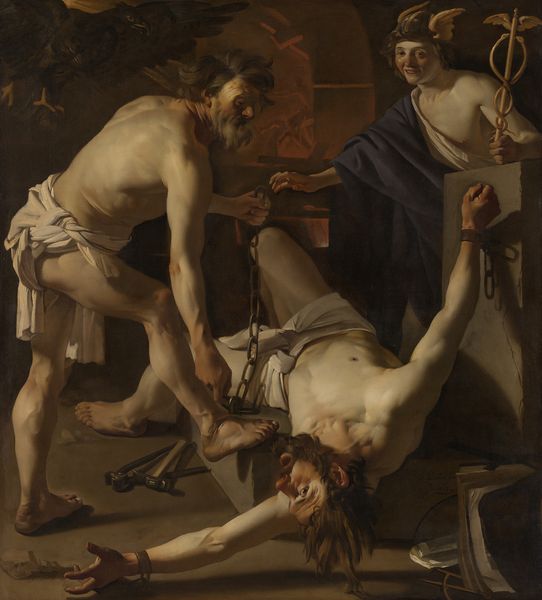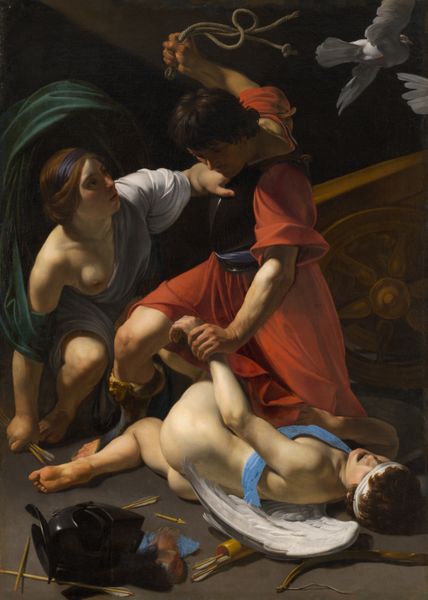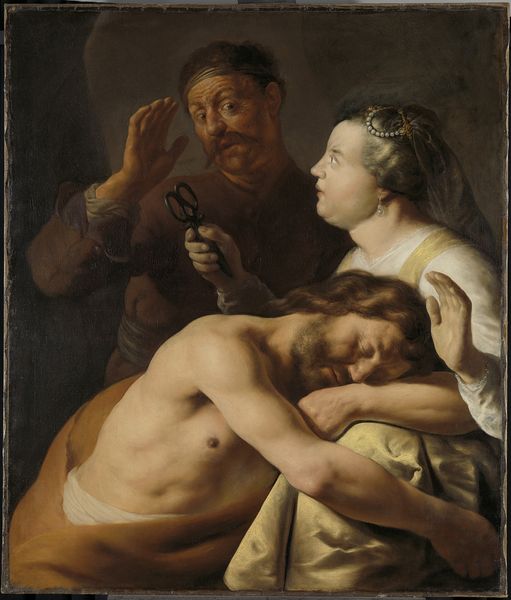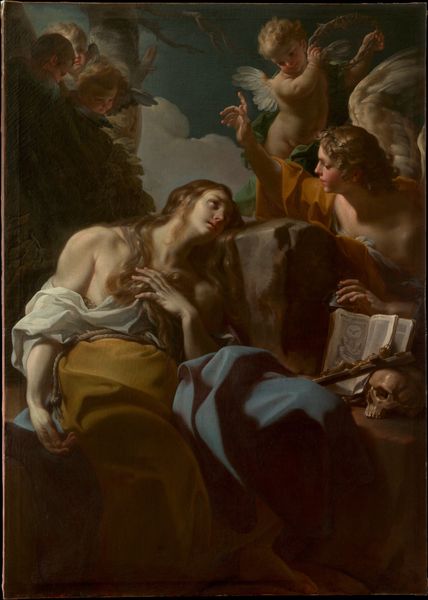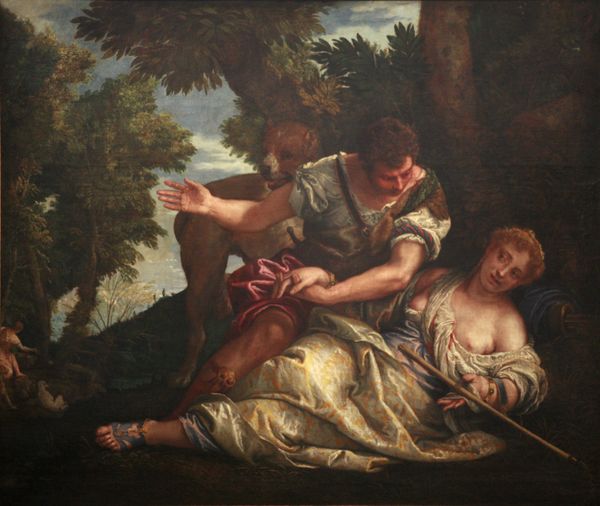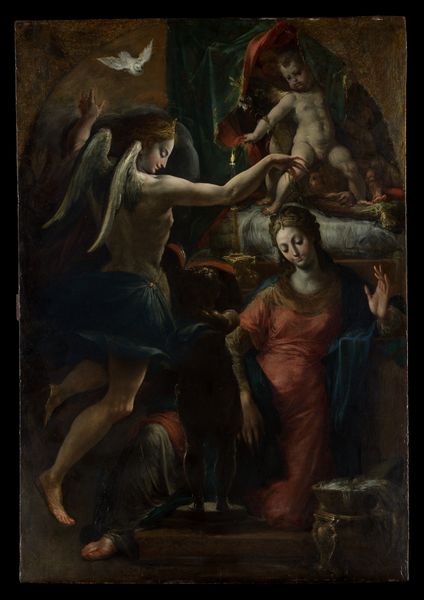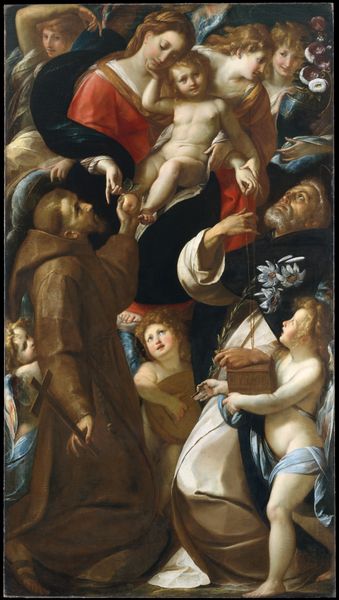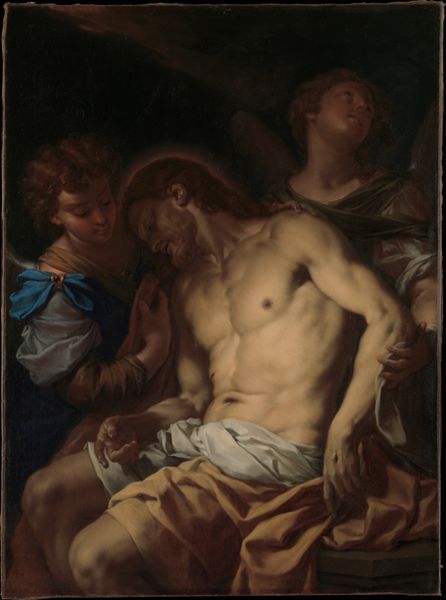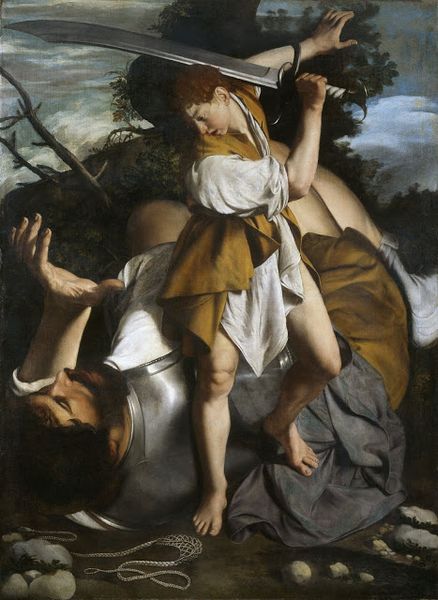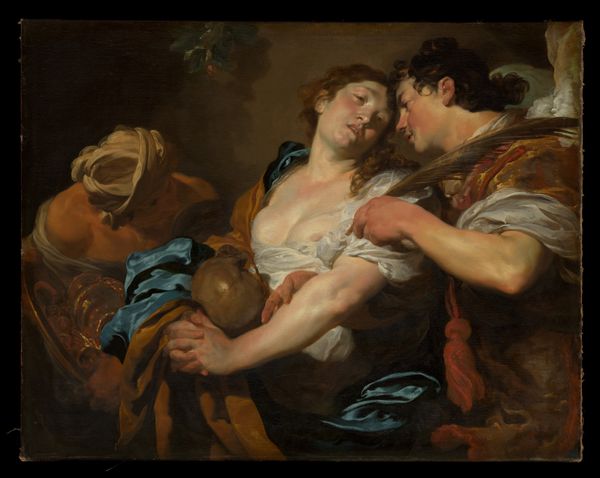
painting, oil-paint, oil-on-canvas
#
portrait
#
allegory
#
baroque
#
painting
#
oil-paint
#
vanitas
#
history-painting
#
oil-on-canvas
#
portrait art
Dimensions: 61 1/8 × 46 in. (155.3 × 116.8 cm)
Copyright: Public Domain
Curator: Looking at this, I’m struck by the heavy shadows, the figures almost emerging from darkness. It feels both intimate and theatrical, like we're witnessing a very private moment staged for an audience. Editor: This is Giovanni Baglione's "The Ecstasy of Saint Francis," painted around 1601. We see Francis supported by two angels, lost in what the artist envisions as a moment of profound spiritual transport. Baglione's interesting career places him at the crossroads of the late Roman Mannerism, and early Baroque styles. Curator: The skull – classic vanitas! It reminds us, doesn't it, of the ever-present reminder of mortality, so typical of the Baroque era. It sits there, nonchalantly balanced, as if saying, "Hey, Francis, even saints check out." Editor: It is compelling to understand "Ecstasy" as a declaration of allegiance, of religious conviction, during the Counter-Reformation. The painting functions as a potent symbol of spiritual devotion, in an era where the Catholic Church sought to reaffirm its authority through visually arresting imagery. Curator: Authority indeed, I find that the composition guides the eyes exactly where it wants us to focus. The dramatic lighting highlights the angelic figures but leaves Francis himself strangely passive, almost doll-like. How active a role is Saint Francis taking in this very dramatic, ‘Ecstasy’? Editor: True! There is the theatricality that you’d mentioned: an orchestrated tableau designed to inspire awe. And it did. These paintings served very much as a vehicle for religious education and spiritual arousal, showcasing saintly lives as templates for piety and conduits for divine intervention. But speaking from the twenty-first century, in what other ways do such idealized depictions resonate, or fall flat? Curator: It resonates for me as a beautiful example of controlled artifice, as the carefully constructed narrative can speak to anyone who understands a drive toward some sense of transcendence. Whether religious, philosophical, artistic or any type of yearning to be freed of something… perhaps from that very same mortality underscored by that cool and casual skull! Editor: It reminds me that images carry incredible weight—then, and now. Exploring its historical layers makes Baglione’s “Ecstasy” unexpectedly timeless, showing how belief, politics, and art become entwined.
Comments
No comments
Be the first to comment and join the conversation on the ultimate creative platform.
